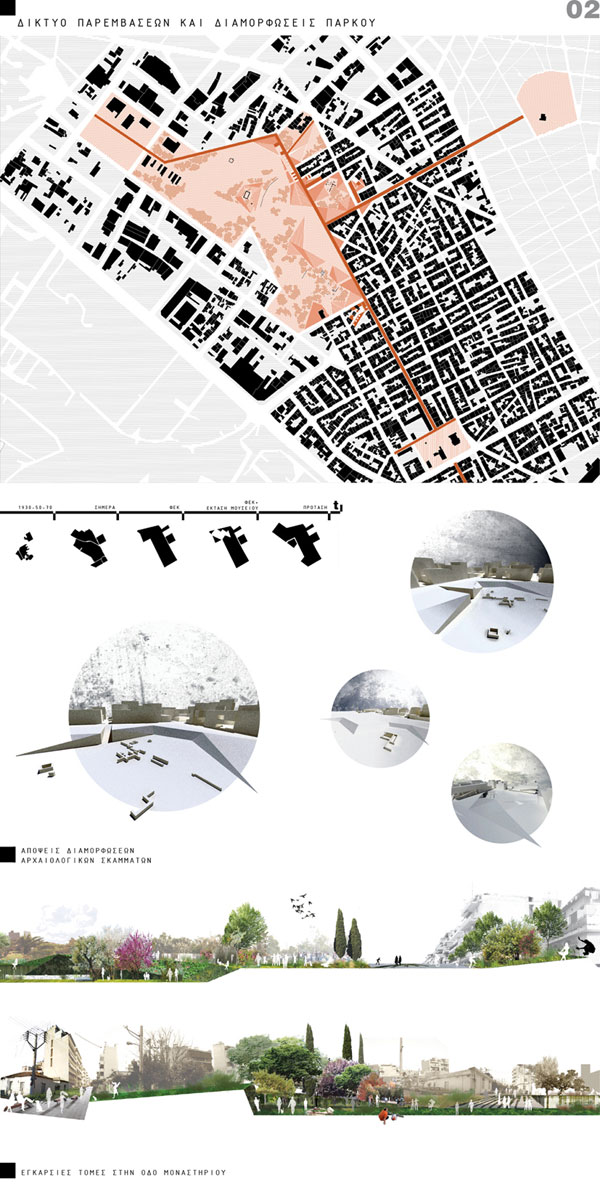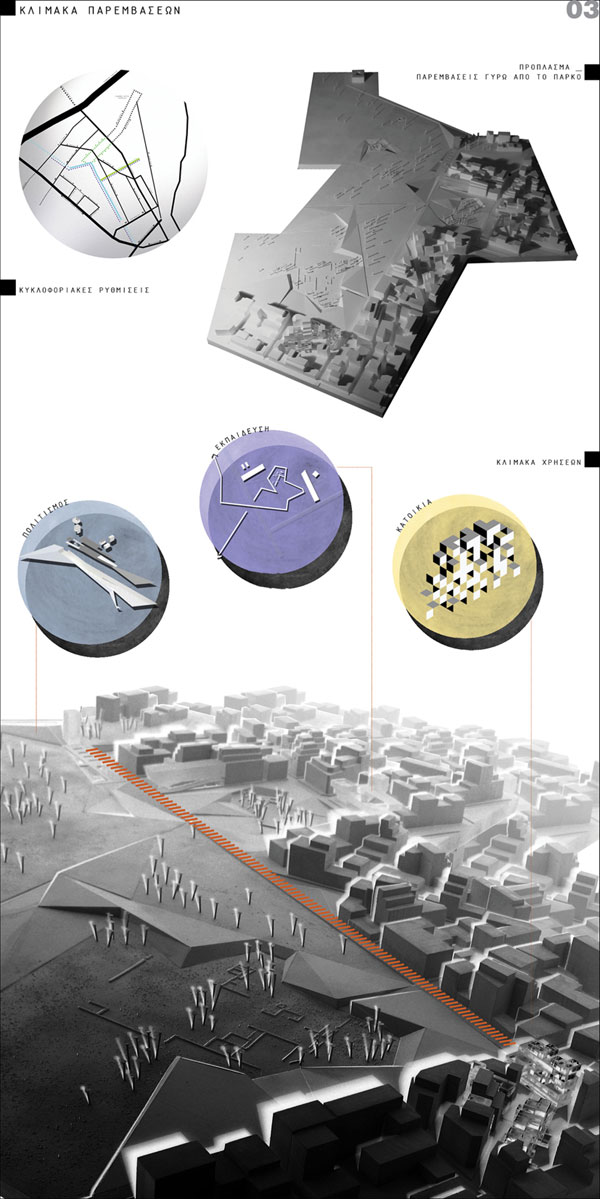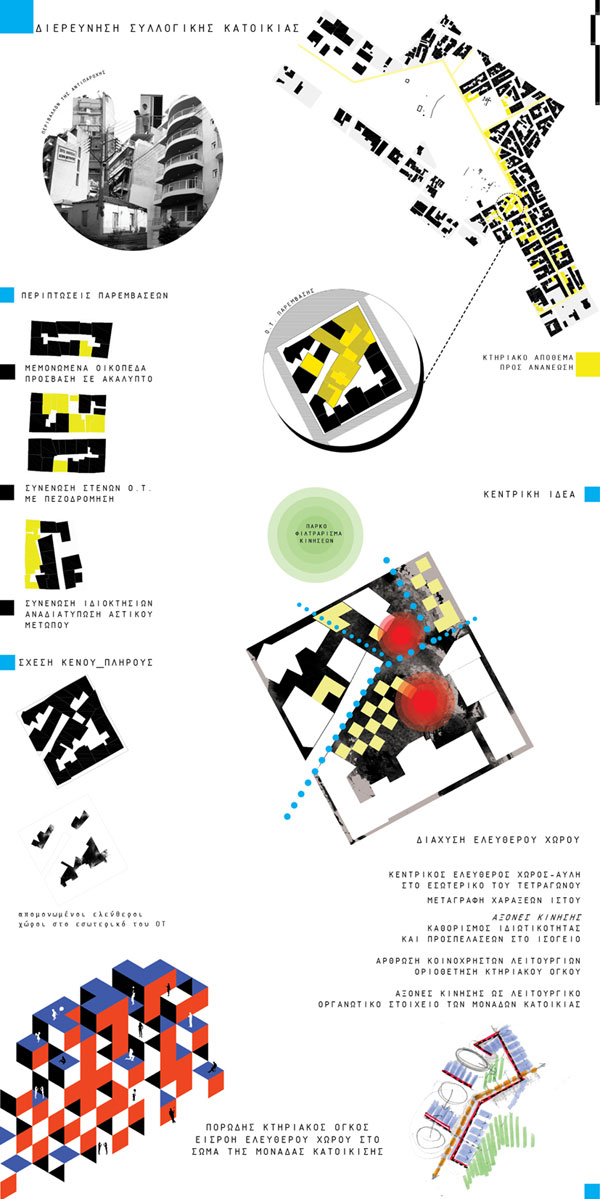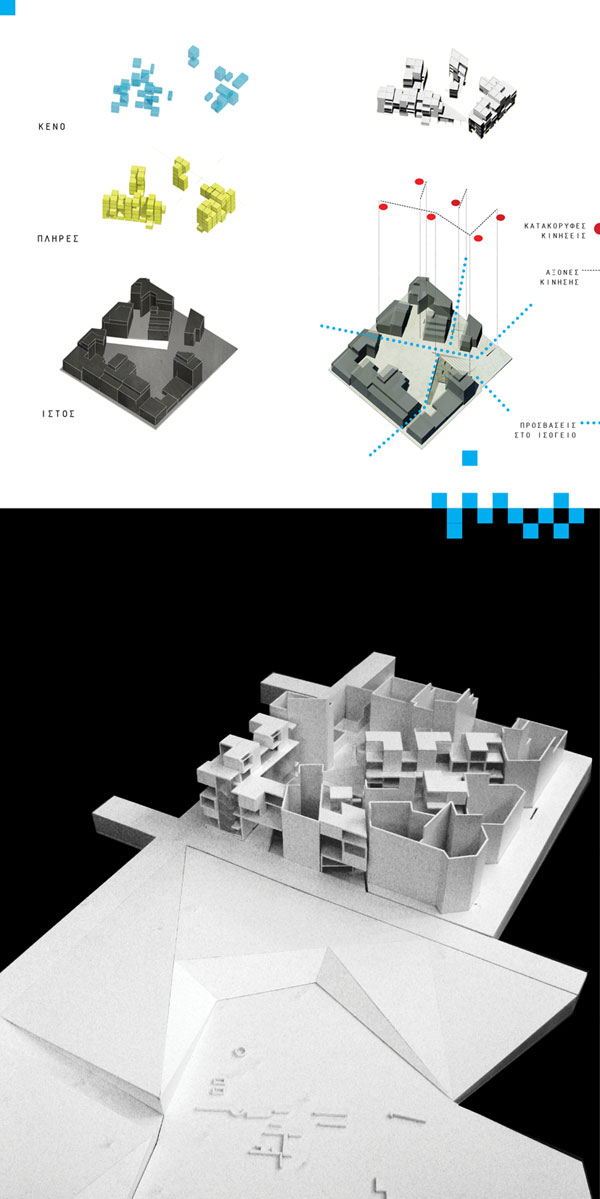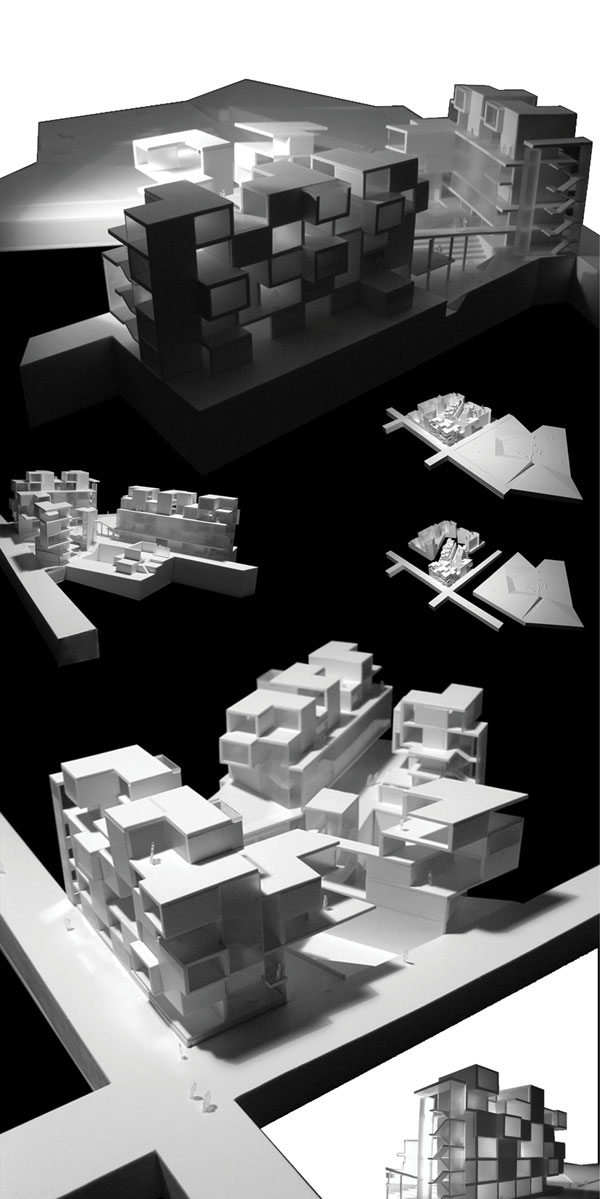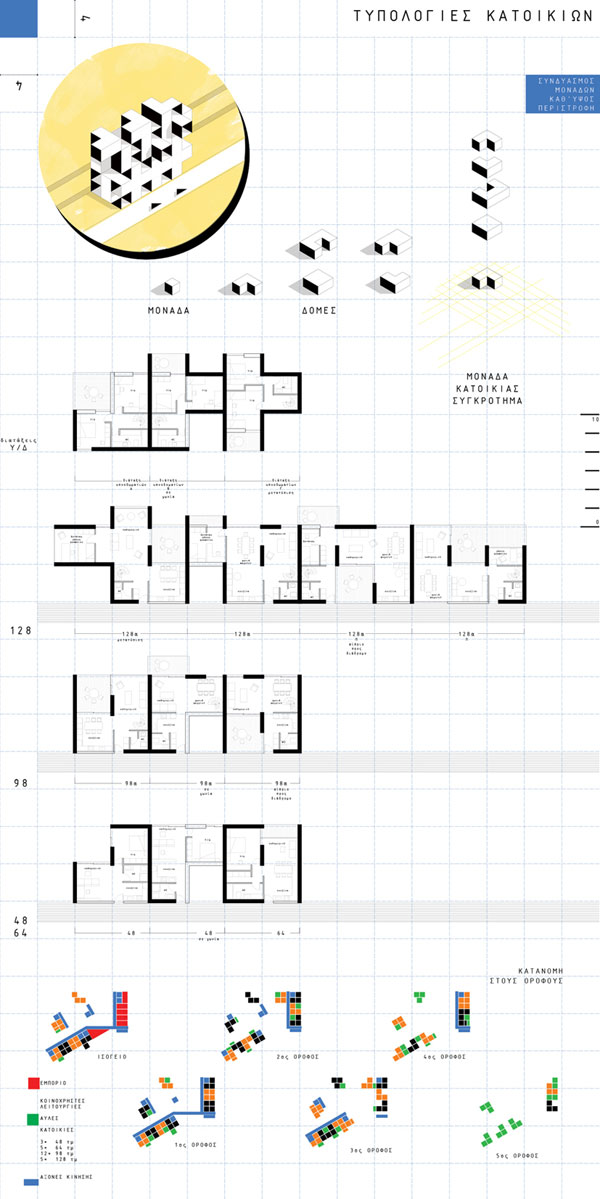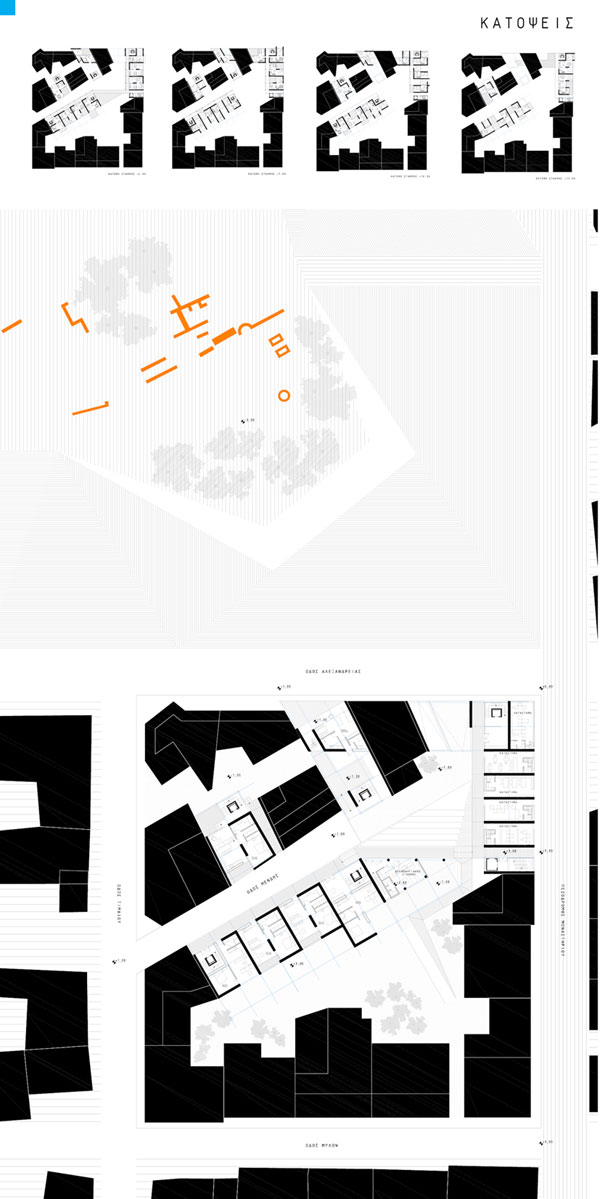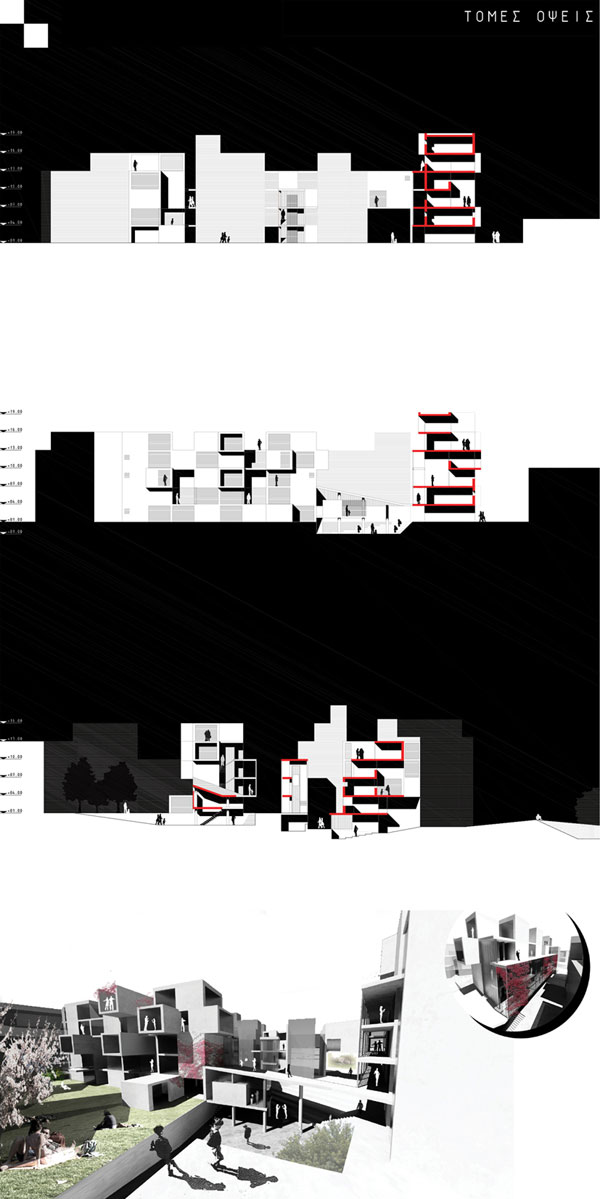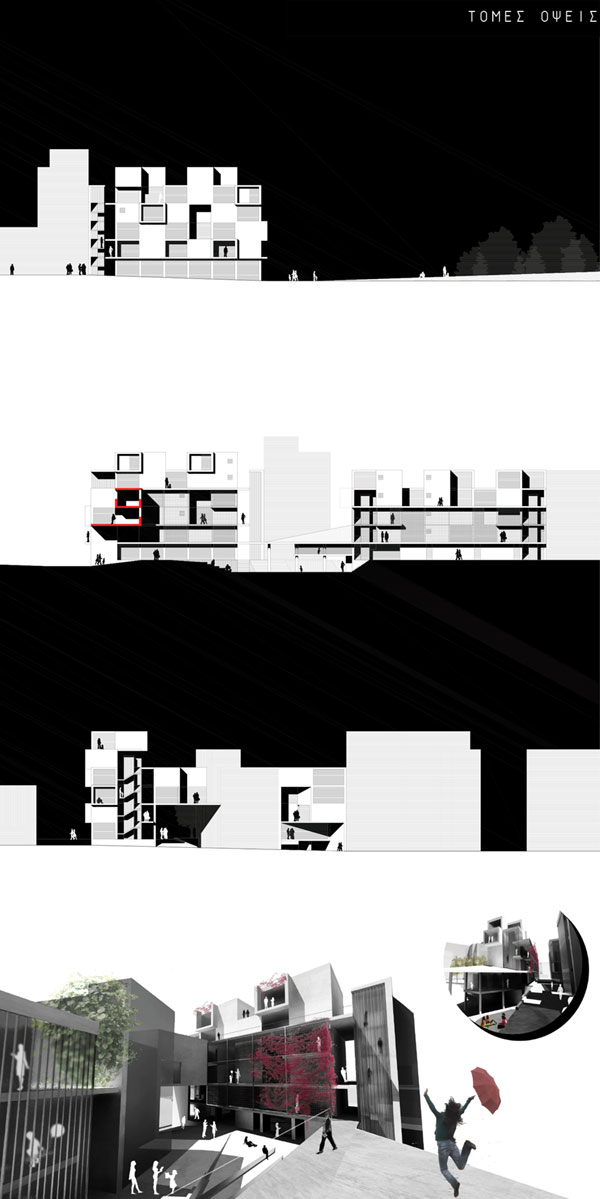STUDENTS PROJECTS
2010
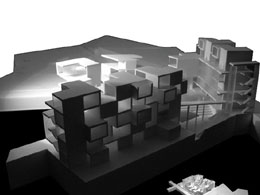
22 March, 2011
Urban intervention network in Plato’s Academy : Collective Housing
Urban interventions around Plato's Academy Park. Mixed use Collective housing _ examining the new urban block.
Student: Giakoumaki Eleni
Supervisor: Tsiraki Sofia,
assistant supervisor: Mavridou Maria
National Technical University of Athens, School of Architecture
Date of presentation: November, 03, 2010
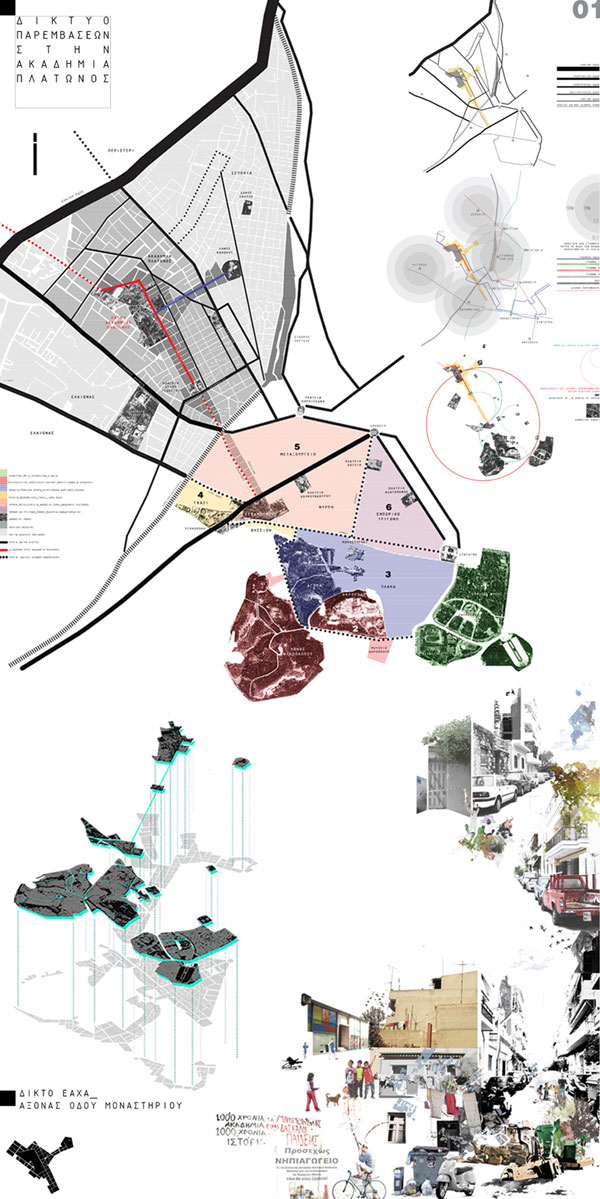
This study is developed right above the trail of the ancient road "Dimosio Sima" concentrating on the proposal of a network of urban interventions, ranging in scale, in the area surrounding Plato's Academy archaeological park. The subjects examined consist of collective housing, education and research and culture.
Network of intervention_ the masterplan
The project focuses on the boundaries of the neighborhood to the archaeological park aiming to alleviate the short-term impact of the development process. Monastiriou Street becomes a pedestrian road constituting the main axis of the intervention acting as the main link between the residential area and the centre of Athens and by extension the broader archaeological network (EAXA). In an effort to reconstitute the relation with the neighboring residential area, Sepolia, Tripoleos street also becomes a pedestrian road connecting Ippeios Kolwnos Hill with Plato's Academy Park. The traffic arrangement is completed with the removal of Cratylou and Drakontos streets thus making the currently divided park into a single open space.
Redesigning the park
The park itself becomes a reference point for the project. Today it takes up two roles: its large scale impact as an archaeological monument and the local scale of the neighborhood park. In an effort to interpret its dual character the austere existing contour of the park is removed and the archaeological excavations intertwine with the open green spaces through folds of the ground. Following this folding line, the existing excavations are redesigned as green geometrical slopes.
Collective Housing
The present study moves beyond the urban scale proposals investigated in a group context and examines the area of collective housing in Akademia Platonos. In the area, the current development process (antiparohi=land granting) combined with the rising land value will sustain the production of a high density urban environment. Principal goal of the study is to propose, having as a starting point the urban fabric adjacent to the park, a collective housing system that organically integrates the recessive open spaces thus creating an internal network for the urban block. Additionally it aims to emphasize on the communal character of housing and offer a better open-closed space ratio.
Scenario of intervention
Analysis of the current built volume (existing urban voids, aged buildings) reveals three intervention categories that intertwine. Initially, use of existing void plots is suggested in order to create access to the internal of the urban blocks. Secondly joining of adjacent plots is used in regenerating the urban street front combined with access to the internal space of the blocks. Finally narrow or small urban blocks are connected through a pedestrian road creating a neighborhood network. This case study suggests that EAXA is considered to have a regulatory role between the municipality and the owners.
Concept
The application of those three scenarios is executed on an urban block adjacent to the southern edge of the park. The main concept is the creation of a central open space core inside the urban block that constitutes the common space of the housing complex. The building volumes that define this yard try to transcribe the scale and proportion of the surrounding structures and the existing outlines of the urban tissue. Additionally they define the accessibility to the central common space from the street or the park and separate from the inner garden on the ground floor. Finally they outline the axes of movement on the ground floor on a grid of uses referring to the neighborhood and the urban block itself. These outlines act as an organizing factor of the housing units on the upper floors shaping a network of open air galleries-intermediate spaces- that distribute to the residences.
Housing Types
Regarding the design of the housing units, the square unit 4*4m acts as the organizational typology of the functions of each house. This unit constituting the "building block" and using simple layouts (U, L, square) it forms the dwelling unit. Mail goal is to allow influx of free space in the "corpus" of each dwelling unit. The housing types range from 48,64,98 and 128 m2 which replicated in space create a "porous" dwelling volume, consisting of open and closed living spaces.
This flexible system also has structural simplicity. In the effort of acting as a model for future housing development in the area and aiming to minimize the building cost the choice of structural materials follows the range of those used in typical constructions (concrete walls and slabs brick walls plaster, metal beams).
